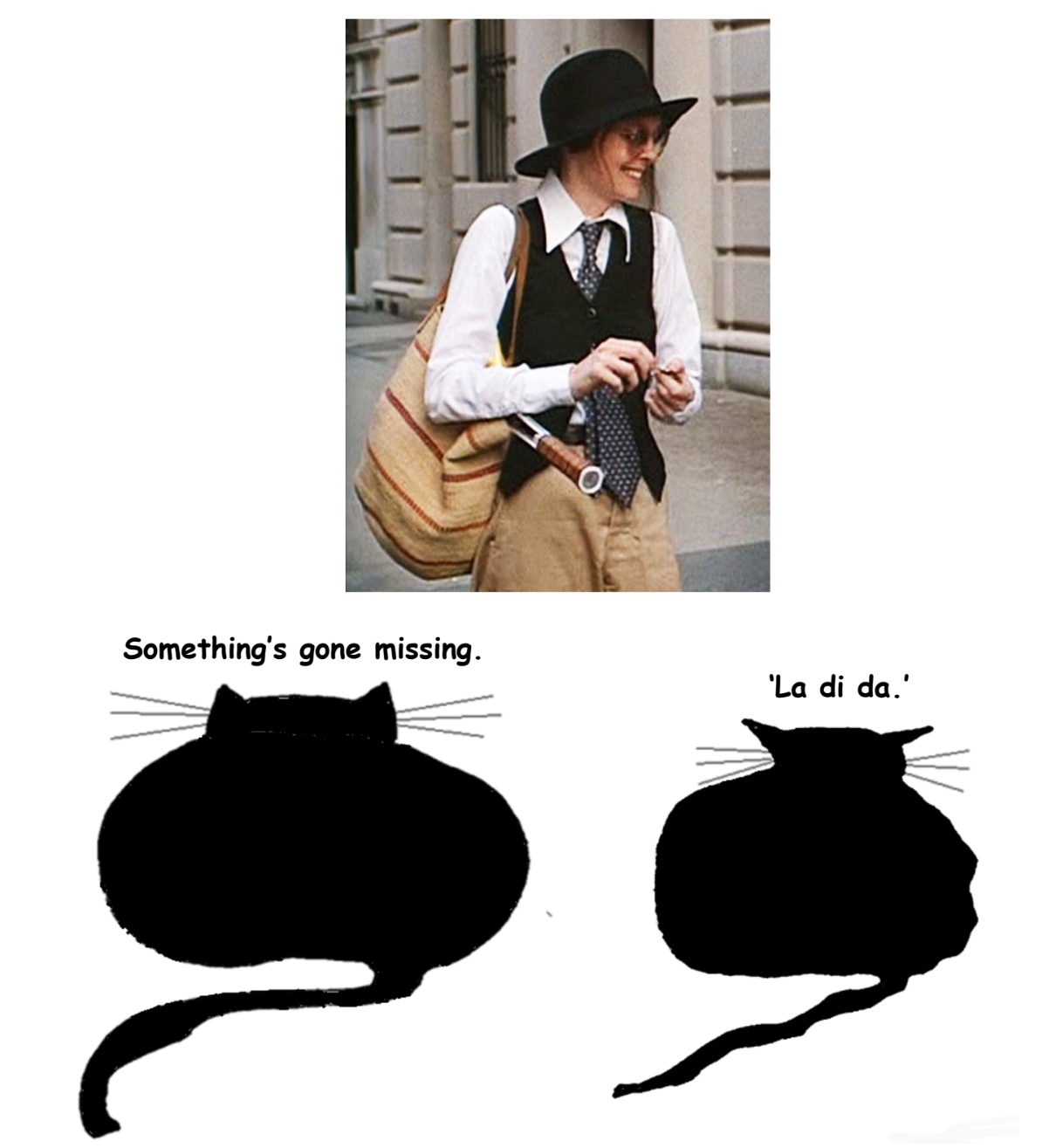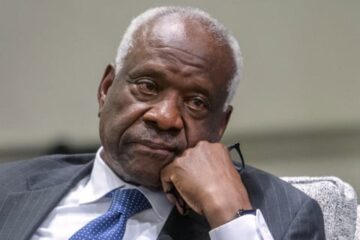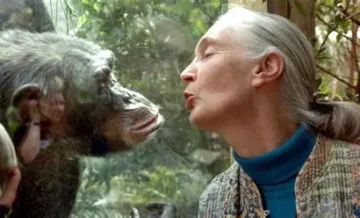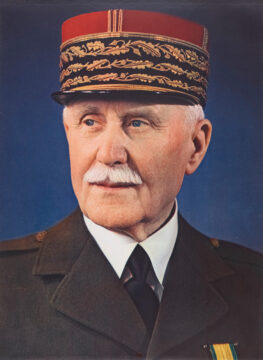by Brooks Riley

Enjoying the content on 3QD? Help keep us going by donating now.
by Laurie Sheck

1.
It has been over 200 years since Mary Shelley began writing Frankenstein in the stormy summer of 1816. Although she was only eighteen, she had already lost one child just days after giving birth; her second child, William, was a few months old. By the time Frankenstein was published, in 1818, Mary had given birth to a third child, Clara Everina, who would live for a little more than a year. It was within this context of rapid cycling between birth and death, welcoming and loss, joy and pain, that Frankenstein came into being. Mary’s own mother, the writer Mary Wollestonecraft, had died thirteen days after Mary’s birth.
The first edition was published anonymously on January 1, 1818, by the small London publishing house, Lackington, Hughes, Harding, Mavor & Jones, with a dedication to Mary’s father, the writer and political philosopher William Godwin, and an unsigned preface by Mary’s husband, Percy Shelley.
The reviews, though mixed, could be searingly negative. Most of them assumed the author was a man. Several conjectured the author was Percy Shelley himself.
“Our readers will guess from this summary, what a tissue of horrible and disgusting absurdity this work presents…Our taste and our judgment revolt at this kind of writing…it inculcates no lesson of conduct, manners or morality…it fatigues the feelings without understanding; it gratuitously harasses the heart….” The review ends wondering whether “the head or heart of this author is the most diseased.” (The Quarterly Review, January 1818).
A review in La Belle Assemble, was more positive, “This is a very bold fiction.” So was Walter Scott’s review in Blackwood’s Edinburgh Magazine where he pronounced the book, “An extraordinary tale, in which the author seems to us to disclose uncommon powers of poetic imagination,” though he found the self-education of the Monster, “improbable and overstrained.”
Although The Edinburgh Magazine found the Monster to be “a very amiable personage” it encouraged the anonymous author to “study the established order of nature as it appears…than to continue to revolt our feelings by hazardous innovations.”
The British Critic also referred to the “diseased” and “wandering imagination” of the author and suggested the writer “might be disciplined to something better.” “The writer of it is, we understand, a female: this is an aggravation of that which is the prevailing fault of the novel.” Read more »
by Barry Goldman

Supreme Court Justice Clarence Thomas spoke recently at The Catholic University of America Columbus School of Law. He was asked how he balances stare decisis with originalism, and he made the following remarks:
Well, if I find it doesn’t make any sense … I think we should demand that, no matter what the case is, that it has more than just a simple theoretical basis.
[I]f [it’s] totally stupid, and that’s what they’ve decided, you don’t go along with it just because it’s decided.
I don’t think that … any of these cases that have been decided are the gospel, and I do give perspective to the precedent. But … the precedent should be respectful of our legal tradition, and our country and our laws, and be based on something – not just something somebody dreamt up and others went along with.
At some point we need to think about what we’re doing with stare decisis, and it’s not some sort of talismanic deal where you can just say ‘stare decisis’ and not think, turn off the brain, right?
We never go to the front, see who’s driving the train, where is it going. And you could go up there in the engine room, find it’s an orangutan driving the train, and you’re going to follow that? I think we owe our fellow citizens more than that.
To be clear, I have nothing good to say about Clarence Thomas. I think he’s a particularly bad judge, even relative to the rest of the bad judges on the Supreme Court. I think he (and they) are wrong on every significant issue. But I agree with him on this. If a decision is totally stupid, if it doesn’t make any sense, and there is an orangutan driving the train, we shouldn’t turn off our brains and go along.
The problem, of course, is that he and I disagree about which decisions are the stupid ones. Read more »
 Sughra Raza. Under Construction. December 2023.
Sughra Raza. Under Construction. December 2023.
Digital photograph.
Enjoying the content on 3QD? Help keep us going by donating now.
by Rachel Robison-Greene

I can’t know for certain that you are a conscious being with an active mental life. I have access (I think) to my own internal states. I feel my own anxieties, indulge in my own joy, anticipate my own future, and remember my own past. I can’t do the same for you; indeed, for all I know, you might be a philosophical zombie: you might act in every observable way as a conscious human being would act, but, in fact, you might lack internal mental states entirely. Beliefs, desires, hopes, etc., might not happen inside of you. This is The Problem of Other Minds. It is an epistemic problem about what we can really know about human minds other than our own.
In ordinary contexts, though, we don’t think knowledge requires certainty. The idea that you might be a philosophical zombie isn’t a skeptical hypothesis I’m expected to take seriously, especially if I’m enjoying your company or consoling you about a loss. As Bertrand Russell wrote, let a philosopher “get cross with his wife and you will see that he does not regard her as a mere spatio-temporal edifice of which he knows the logical properties but not a glimmer of the intrinsic character. We are therefore justified in inferring that his skepticism is professional rather than sincere.”
In our everyday interactions with one another, we take behavior that is typically caused by certain mental states in our own case to count as sufficient evidence that the same or similar mental states are present in the minds of other people. If you pluck the fruit from the tree, it’s likely because you believe it is ripe. I am justified in drawing that conclusion because that’s likely the belief that would motivate me to pluck the fruit.
This reasoning is good enough for us most of the time in our interactions with other human beings. When it suits us, however, we treat non-human minds with much more skepticism, especially when it is in our interest to do so. Though philosophical behaviorism is no longer in vogue in human psychology, scientists still treat it as gospel when it comes to research on non-human animals. When discussing interactions with animals, a scientific approach involves making observations about stimulus inputs and response outputs without speculating about the inner states of animals whose internal lives we can’t access. We make similar judgments when thinking about the minds of animals that we kill for food. This is The Problem of Animal Minds, and it is much more than an epistemic problem. Read more »
by Derek Neal
 Kazuo Ishiguro often talks about a scene from Charlotte Brontë’s Jane Eyre that has influenced his writing. In an interview on the occasion of his Nobel Prize in 2017, he mentions how “the narrator hides from the reader and hides from herself in the Charlotte Brontë books,” and how he also writes first person characters in this way. Elsewhere, Ishiguro mentions a specific scene from Jane Eyre where she is crying but doesn’t tell this to the reader; instead, another character in the novel reveals this information. Here’s the passage form Jane Eyre, where Mr. Rochester, whom Jane is in love with, is speaking to her after she believes she has seen evidence that he is in love with another woman. Rochester asks her:
Kazuo Ishiguro often talks about a scene from Charlotte Brontë’s Jane Eyre that has influenced his writing. In an interview on the occasion of his Nobel Prize in 2017, he mentions how “the narrator hides from the reader and hides from herself in the Charlotte Brontë books,” and how he also writes first person characters in this way. Elsewhere, Ishiguro mentions a specific scene from Jane Eyre where she is crying but doesn’t tell this to the reader; instead, another character in the novel reveals this information. Here’s the passage form Jane Eyre, where Mr. Rochester, whom Jane is in love with, is speaking to her after she believes she has seen evidence that he is in love with another woman. Rochester asks her:
“What is the matter?”
“Nothing at all, sir.”
“Did you take any cold that night you half drowned me?”
“Not the least.”
“Return to the drawing-room; you are deserting too early.”
“I am tired, sir.”
He looked at me for a minute.
“And a little depressed,” he said. “What about? Tell me.”
“Nothing—nothing, sir. I am not depressed.”
“But I affirm that you are; so much depressed that a few more words would bring tears to your eyes—indeed, they are there now, shining and swimming; and a bead has slipped from the lash and fallen on to the flag.”
Rochester continues for a few more lines until the chapter ends, with Jane not saying anything else or commenting on the conversation. She is hiding from the reader and, as Ishiguro says, from herself, but the encounter with Rochester reveals her true feelings for him. In being forced to confront the world outside one’s head—the objective world, rather than her subjective one—the truth she would seek to repress comes to the surface.
Ishiguro most famously used this technique in The Remains of the Day with the butler Stevens, another character who spends the novel hiding from the reader and from himself. Read more »
Just a little time with you
upon the gleaming sea
Just a little time will do
and the time will make us free
And yes, the sky is our bed tonight
Just a little company
can make a prairie small
And to hear a word or two
resounding down the hall
can lift the weight, can swing the gate
Just a little time with you
will tip the hand of fate
Jim Culleny, 1972
The song: Just a Little Time With You_0001.wmv
Enjoying the content on 3QD? Help keep us going by donating now.
by Daniel Gauss
 While teaching English at a Yeshiva in the Bronx, I was surprised one day to become part of a theological thought experiment so creative and meaningful that it has stayed with me ever since. After recently learning that the universe may “die” much sooner than previously thought, I recalled that moment as it offered metaphorical depth and poignancy to a scientific truth.
While teaching English at a Yeshiva in the Bronx, I was surprised one day to become part of a theological thought experiment so creative and meaningful that it has stayed with me ever since. After recently learning that the universe may “die” much sooner than previously thought, I recalled that moment as it offered metaphorical depth and poignancy to a scientific truth.
One day, a rabbi came to speak to our teaching staff. I was touched when he singled me out with a friendly gesture, a small, personal act of welcome from a community that had warmly embraced me, and I was happy to be a part of, even though I came from a different religious background.
He said, genuinely smiling widely, “I heard this guy here is quite a mensch! Yes? No?” To my relief my kind and supportive colleagues smiled at me and nodded their heads. “So he’s a good guy? I heard the kids like him. OK.”
The rabbi continued, “Now here’s my question. If I were to put Dan, this good guy, in Antarctica, in a hut with food and water, but no life, no life at all, not even a cockroach, nothing alive for miles around, nothing living that Dan could see, so Dan would be completely isolated, would he still be good?”
It was a clever setup. Most nodded. Some said, “Yeah, of course he would. He’s good, period, wherever he is.” But the rabbi, still smiling, said, “Well, if you think about it, you can’t be ‘good, period’. Goodness without someone to be good to isn’t goodness.”
Then he offered a startling analogy: this, he said, was God’s condition before “creation.” Only with others, with creation, with humanity, could God be good. Goodness needs relationship. Without humanity, God was not good, and God needed to be good. God had just been itching to be good. Read more »
I didn’t see E.T. the Extra-Terrestrial when it came out in 1982, but I was certainly aware of it. It was an unexpected smash hit and went on to become the highest grossing film of all time, at least for a while. At this point I don’t remember why I didn’t go to see it. After all, I’d enjoyed Spielberg’s previous film, Close Encounters of the Third Kind (1977).
Whatever.
I certainly knew the basic story: A weird little alien gets left behind and is befriended by a young boy. They do stuff together. Somehow the alien sends a signal back home – there’s that iconic line, “E.T. phone home.” His people come back for him. The end.
About a week ago I saw E.T. in my Netflix queue and thought, “Why not?” I started watching it. By about a half-hour in I was delighted, but also surprised, and even a bit disoriented. My rudimentary sense of the story didn’t give me any particular expectations, but my lack of specific expectations had not prepared me for, you know, THIS! This little note is an attempt to figure out just what it is that I saw.
by Rafaël Newman
 On Yom Kippur this year, I went to church.
On Yom Kippur this year, I went to church.
I hadn’t intended to go; or rather, I hadn’t noticed that the Jewish Day of Atonement would coincide with the date of the performance I had been planning to attend, and which was to be held in a church. I had realized just two days earlier that the Übersetzeressen (“Translators’ Dinner”), to which my employer had invited all of us in Languages Services, would by chance fall on September 30, International Translation Day, which is also the feast day of St. Jerome, the patron saint of translators. And so, heartened by this serendipity, I started investigating the significance of other dates during the same period, and came across Yom Kippur, which began this year at sundown on Wednesday, October 1, just as I was settling into my pew at the Reformierte Kirche Russikon for Winterreise.
Anna Gitschthaler, an Austrian soprano based in Switzerland, has thrillingly reconceived Franz Schubert’s song cycle as theater and has been performing it this month, together with pianist Rebecca Ineichen, director Adela Maria Bireich, and set designers Erika Gedeon & Stefan Schmidhofer, in Zurich’s Oberland. Gitschthaler is of course not the first to give Winterreise a dramaturgical makeover, nor is she the first female singer to perform the 1827 setting of 24 poems by Wilhelm Müller, conventionally sung by a man: I have written here about some innovative stagings, by Ian Bostridge, Brigitte Fassbaender, and Joyce DiDonato, as well as about my own involvement in a “gender-bending” performance of the cycle two years ago, with my colleagues Annina Haug and Edward Rushton. But Gitschthaler’s Winterreise is indeed a pioneering production—of Müller and Schubert’s evocation of suffering and redemption, as well as in its own right—because it makes self-conscious use of the sacral space of a temple as the (literal) staging ground for a work of musical theater, and thus innovatively enacts the equivalence of art and religion, if not in fact the superiority of the former over the latter. Read more »
by Marie Snyder
 It feels like I understand the idea that all suffering comes from expectation in a way I didn’t used to. Now it seems so obvious, but I’m not really sure what flip was switched. It’s not just that if we stop expecting to get things, we’ll be happier, but how ridiculous it is to expect anything to stay the same at all, much less get better, ever. And that understanding seems to help reduce some anxiety over the things that can’t be easily changed. Suffering is inevitable, but it can be somewhat diminished in order to have more contentment. We can change what counts as suffering, and we can change our perspective around tragedies, so maybe we can also change how we can continue to bear witness to, or experience, absolute atrocities.
It feels like I understand the idea that all suffering comes from expectation in a way I didn’t used to. Now it seems so obvious, but I’m not really sure what flip was switched. It’s not just that if we stop expecting to get things, we’ll be happier, but how ridiculous it is to expect anything to stay the same at all, much less get better, ever. And that understanding seems to help reduce some anxiety over the things that can’t be easily changed. Suffering is inevitable, but it can be somewhat diminished in order to have more contentment. We can change what counts as suffering, and we can change our perspective around tragedies, so maybe we can also change how we can continue to bear witness to, or experience, absolute atrocities.
One simple way to reduce suffering is to narrow the definition. Comedian Michelle Wolf jokes, “It’s hard to have a struggle and a skin care routine,” which clarifies that we might be considering some difficulties as suffering in a way that doesn’t fly when we widen the scope of our horizons. Pain is pain and can’t definitively be compared, yet I believe many of us have an automatic judgment in our heads that lists events in a hierarchy. Typically suffering from having to do a task we don’t want to do, like write a boring report or clean out the fridge, or from wanting luxuries we can’t afford, like another trip, might be relegated to the bottom as whining. The pain from it is there, though: the agony and stress from uninteresting maintenance that’s necessary to further our own existence or the grief over lost opportunities. Furthermore, it can develop an extra layer of shame on top of the suffering if we try and fail to elicit sympathy for having so much food that some is left to rot and needs to be cleaned. When we realize we can’t afford that trip after all, this is a suffering we are expected to bear without complaint.
The shame on top of the very real distress doesn’t help, but a different perspective might: comparing to those worse off, recognizing the tasks as merely one choice with alternatives that are even less pleasant, or maybe even finding ways to enjoy the task or staycation are ideas passed down for millenia. If we can increase our distress tolerance around these lesser calamities, then we can potentially wipe out the bottom layer of our pile of pain. Read more »
by Eric Feigenbaum

“We have to develop Singapore’s only available natural resource, its people,” Lee Kuan Yew often said in one variation or another.
Lee, Singapore’s founding Prime Minister, held the role for 31 years before his “emeritus jobs” of Senior Minister and later Minister Mentor – staying active in Singaporean government until his death in 2015 at 91 years-old. Throughout his life Lee reminded Singaporeans and the world that Singapore had been not much more than a dusty red sandbar when it began – dependent on water from peninsular Malaysia and unable to meet its own agricultural needs.
Singapore’s economy was transformed from being centered around shipping, trade and a British naval base to being diversified to include more profitable and scalable industries including manufacturing, finance, software and biotech. To do this, Singaporeans had to be able to move into white collar jobs – which of course required education and lots of it.

Accordingly, education became an early focus for Singapore’s leadership. Most of Singapore’s founders were themselves graduates of the greatest schools in the British Empire – including Cambridge, Oxford and the London School of Economics. But they were the products of highly successful families who could afford to send their sons abroad (although notably, Mrs Lee also attended Cambridge and became a highly successful attorney in her own right – making her a pioneer and icon in Singapore). These leaders understood their country needed education not to be concentrated in the elite – but to be the standard for all Singaporeans. Read more »
by Jeroen Bouterse
 In Timur Vermes’ best-selling novel Er ist wieder da (‘He’s back’), Adolf Hitler wakes up in Berlin. Somewhat disoriented after discovering the year is 2011, he soon finds his way to the public eye again: he is understandably regarded as a skilled Hitler impersonator, an excellent ironic act for a 21st-century comedy show. His handlers don’t mind the fact that he never breaks character.
In Timur Vermes’ best-selling novel Er ist wieder da (‘He’s back’), Adolf Hitler wakes up in Berlin. Somewhat disoriented after discovering the year is 2011, he soon finds his way to the public eye again: he is understandably regarded as a skilled Hitler impersonator, an excellent ironic act for a 21st-century comedy show. His handlers don’t mind the fact that he never breaks character.
Clips make it to YouTube, and the ‘Führer’ becomes a beloved persona. After humiliating the ineffectual leader of a far-right fringe party, he is assaulted by skinheads. Politicians express their sympathies, a book deal follows. The novel ends with its main character at the head of an up-and-coming party, whose slogan is: Es war nicht alles schlecht – “it wasn’t all bad”.
Vermes puts Hitler in a Germany that believes it is finally able to laugh at him, or at itself through him. Commercial media encourage his popularity, which at first seems tongue-in-cheek but gradually turns out to be more than that. The country is unprepared for his literal-minded and violent racist madness – and for the traction it subtly gathers, the threads in our own discourse that it starts to pull on again. Everyone thinks they know Hitler, but fails to recognize him when he is among us now.
I thought of this story again as I read historian Alec Ryrie’s new book The Age of Hitler and How We Will Survive It. Ryrie’s thesis is that after the Second World War, the Atlantic and European world placed Hitler at the center of the Western value system (as its negative mirror image). This went at the cost of another historical figure, whose return we have similarly stopped expecting: in the nineteenth and early twentieth century, Jesus had represented a moral authority that was deeply felt not just by Christians, but also by free-thinkers and atheists. In the mid-twentieth century, Nazism became the new moral absolute. This model lasted for decades, but Ryrie discerns a new cultural shift, one that is happening now. With the age of Atlantic hegemony, the ‘age of Hitler’ is coming to an end too. What lies beyond it is still up for grabs. Read more »
by Akim Reinhardt
 The Lakota name for Wounded Knee Creek is Čaŋkpe Opi Wakpala. The first letter is a -ch sound. The ŋ signifies not an n, but nasalization as when you say unh-unh to mean no.
The Lakota name for Wounded Knee Creek is Čaŋkpe Opi Wakpala. The first letter is a -ch sound. The ŋ signifies not an n, but nasalization as when you say unh-unh to mean no.
*
When I teach Indigenous history, at the beginning of the semester I tell my students they’re going to have unlearn things they think they know. By the end of the semester, they are often astounded at how much they didn’t know.
*
Wounded Knee Creek begins in southwestern South Dakota, near the Nebraska state line. It flows mostly north and a little west for about a hundred miles before joining the White River. The White River, which originates northwestern Nebraska, continues mostly east and a little north until it reaches the Missouri River. The Missouri starts in the Rocky Mountains of Montana and runs for nearly 1,500 miles before joining the Mississippi River near modern day St. Louis. The Mississippi empties into the Gulf of Mexico south of Louisiana.
*
On December 28, 1890, the U.S. Army, specifically the 7th Cavalry, slaughtered an unknown number of Lakota (sometimes called Sioux) people near Wounded Knee Creek. The exact number is unknown because the corpses were buried in a mass grave without being counted. However, no one disputes that the majority of murder victims were women, children, and the elderly.
*
I teach my students about settler colonialism. White ethnonationalists and some other right wing extremists get upset when teachers and scholars teach and discuss settler colonialism. But it is a real and ongoing process, just like capitalism and cultures. Like capitalism and cultures, settler colonialism is a system, not an event, though like other systems, it produces many, many events. Read more »
Guess what this is, sitting on a counter in my office.
Enjoying the content on 3QD? Help keep us going by donating now.
by Herbert Harris

Artificial intelligence has emerged not as a single technology but as a civilization-transforming event. Our collective response has predictably polarized between apocalyptic fears of extinction and utopian dreams of abundance. The existential risks are real. As AI systems become increasingly powerful, their inner workings become increasingly opaque to their creators. This raises very reasonable fears about our ability to control them and avoid potentially catastrophic outcomes. However, between apocalypse and utopia, there may be a subtler and perhaps equally profound danger. Even if we navigate the many doomsday scenarios that confront us, the same opacity that makes AI potentially dangerous also threatens to undermine the foundations of humanism itself.
The dangers of AI are often perceived as disruptions and displacements that will temporarily shake up the workforce and the economy. These changes are significant losses, but we have overcome greater challenges in the past. Copernicus removed us from the center of the universe; Darwin took away our biological uniqueness; Freud showed we are not masters of our own minds. Each revolution has both humbled and enriched humanity, opening new ways to understand what it means to be human.
People will still exist, but who will we be when machines surpass doctors, teachers, artists, and philosophers, not in some distant future, but within our lifetimes? AI tutors already offer more personalized instruction than most classrooms. Diagnostic models outperform radiologists on complex scans. Generative systems produce vast amounts of art, music, and text that are indistinguishable from human work. None of this is inherently harmful. Students might learn more, patients might be diagnosed earlier, and art could thrive in abundance. However, the roles that once carried social meaning and usefulness risk becoming merely decorative. Dehumanization does not necessarily mean extinction; it can mean the loss of purpose and self-worth. Read more »
by Shadab Zeest Hashmi
 1. Roses
1. RosesMiniatures and illuminated manuscripts from the Islamic world offer up an abundance of floral depictions. Cultivating gardens and replicating them in art, has a spiritual dimension, as gardens symbolize paradise; “Jannah” in the Qur’an is a “hidden garden” that inspires to be revealed and realized in the creative arts. Gardens have a place in the realm of earthly power too; from Spain to India, some of the most elaborate garden designs were commissioned under Muslim rule. In portraits of princes and noblemen, there is often a sprig of flowers or a single rose in one hand, slightly raised, whereas the body is angled to show the regalia: jewels, sashes and belts with daggers or swords. While a flower in bloom in an imperial image may symbolize vitality, refinement, and a concern for balancing the fierce with the tender, the true poignancy it evokes lies in its vulnerability and inevitable decline.
A famed ghazal verse captures a most spectacular swing of empire’s pendulum: the end of one of the wealthiest and culturally most opulent empires in history, the Mughal empire, whose dominion over large swathes of territory in South Asia was wrested from it by the British Raj. As he lies dying in exile (1862), the last Mughal emperor Bahadur Shah Zafar writes:
How hapless is Zafar, for his burial
Not even two yards of land could be found in the beloved’s neighborhood
Some of his most finely wrought poems are in the Sufi vein, exquisite verses that stand apart in the Urdu cannon. I would if I could, bring roses as homage to his resting place, left unmarked, in Burma where he died.
While the king yearns for two yards of burial ground in the land his ancestors ruled over with such pomp for centuries, the British Empire, though destined to be short-lived, is fast expanding, and by the nineteenth century, comprises nearly one-quarter of the world’s land surface. Read more »
by Michael Liss
… I watched with increasing apprehension the Third Republic go downhill, its strength gradually sapped by dissension and division, by an incomprehensible blindness in foreign, domestic, and military policy, by the ineptness of its leaders, the corruption of its press, and by a feeling of growing confusion, hopelessness, and cynicism (Je m’en foutisme) in its people. —William L. Shirer, The Collapse Of The Third Republic
“Do you think America’s political system can still address the nation’s problems or is it too politically divided to solve its problems?” 33% said “can still address”; 64% “too politically divided.” —Results of a nationwide New York Times/Siena poll of 1,313 registered voters conducted from Sept. 22 to 27, 2025.
Let me take you back 10 years, to the fall of 2015. An email from a good friend, the type of person America doesn’t manufacture anymore—both a scholar and an international businessman, multilingual, connected to an array of influential institutions and people, and a moderate Republican.

He was writing just after the November 2015 Islamic State-sponsored Paris and Saint-Denis terror attacks, which left over 100 dead and 400 injured. The breakdown in civic culture was part of his concern, but it wasn’t the only one. He was profoundly worried about the startling rise of Donald Trump. He wondered if we in the United States weren’t also turning toward the anger, the xenophobia, and the dysfunction that characterized the discourse in 1920s and 1930s Europe. That was the atmosphere that brought then to a Hitler and a Mussolini, the “confusion, hopelessness and cynicism” in France that Shirer wrote of. Could it happen here?
For context, Trump had entered the contest for the GOP Presidential nomination on June 16, 2015. In his announcement speech, he mentioned economic themes like deficits and offshoring of jobs, but also pounded (with explicit, highly charged language) on illegal immigration and the threat of Islamic terrorism. Deficits and immigration were standard topics for any Republican, but Trump wasn’t “any Republican”—he was on his own island, launching what seemed a vanity candidacy by a man with a potty-mouth who sprayed people and entire ethnic groups with insults. His opponents scorned him, advertisers distanced themselves from him, and odds-makers were positive he had almost a negative chance of winning. Public polling seemed to bear them out. A June 2015 NBC/WSJ Poll had Jeb Bush in the lead at 22%, Scott Walker at 16%, Marco Rubio 14%, Ben Carson 11%, then six others (Mike Huckabee, Rand Paul, Rick Perry, Ted Cruz, Chris Christie) …. and, in 10th, the last position to qualify for the first GOP debate, Carly Fiorina. Not a Trump amongst them. There was something Trump did excel at—he was soundly rejected by the Republican public—16th out of 16 to the question of “Could you see yourselves supporting this candidate or not?” at a formidable minus 34%. It wasn’t that the Republican voter didn’t know Trump. They did know, and what they knew they didn’t like.
But Trump had found something most of the major Republican candidates, conservative commentariat, and the media, had missed. His inflammatory language, which they saw as crude, un-Presidential (and they hoped) disqualifying was heard as a beat to quarters by others. Trump might be a blowhard, but at least he didn’t sound like a lawyer or a professional politician. All those guys did was talk, and for all the rounded, consultant-tested phrases they laid out like tapas on a tasting menu, it was Trump, with his ill-mannered vitality, that got through. Read more »
by David Winner

In an interview with Ezra Klein about LGBTQ rights, Sarah McBride, the first openly trans member of congress, talks about a “sense of a cultural victory that lulled us into a false sense of security and in many ways shut down needed conversations.”
I don’t know about that, but before the 2024 election and its tremendous blowback against rights of all but the narrowest sector of humans, tolerance for the LGBTQ community did seem to be at an all-time high.
A cultural time capsule, this writing relays some bizarre conversations about queer issues from long before, the 1990s.
Though I’m a straight cis man, I’ve been fortunate enough to land in queer-friendly worlds, and queerphobia has not been among my pantheon of character flaws. When I encountered milder forms of sexual harassment – persistently tongued in the ear by my friend’s drunken boyfriend on the J train platform just after college, fending off an aggressive Puerto Rican doctor at the gay male end of Jacob Riis beach a few years later – I was neither aroused nor disturbed nor disgusted. Just mildly annoyed.
My odd sartorial choices, my quirky mannerisms of speech often registered as gay when I was younger.
That misidentification started happening all the time after I began teaching at a community college in Journal Square in the 90s, a rough and seedy part of Jersey City. Female students tended to leave me alone, but some of the boys were out for blood, the gay blood that they assumed was mine. A dumb essay that I assigned, simply urging men to be more sensitive with no queer implications, was riotously mocked. Read more »